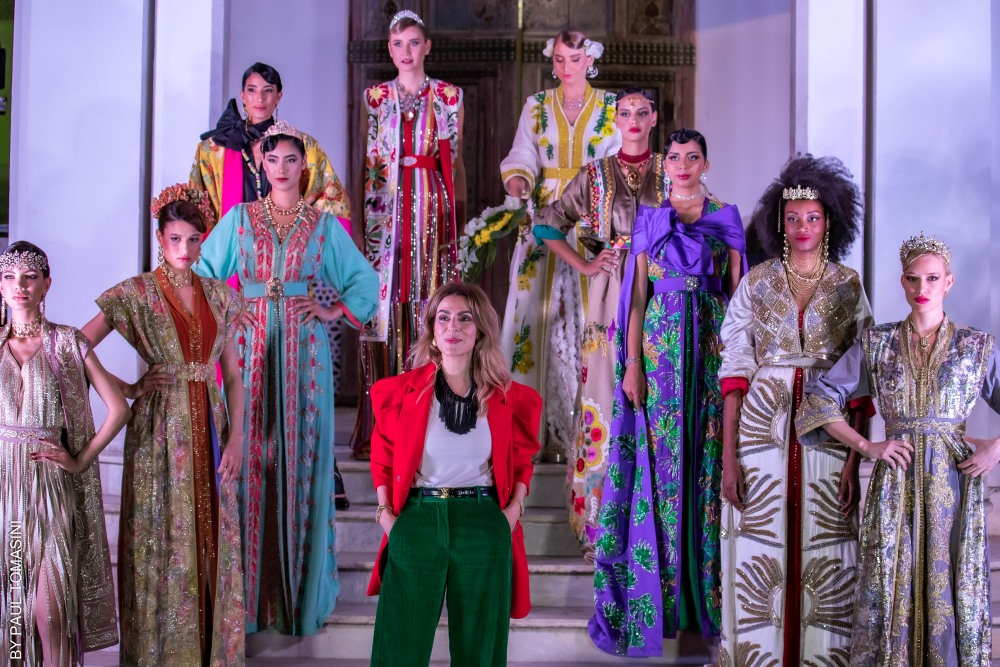“Fast fashion isn’t free. Someone somewhere is paying.”
— LUCY SIEGLE
Fashion Industry is one of the most profitable industries in the world. It is always changing and evolving. There are two expressions “fast fashion and slow fashion” that are used increasingly in the industry. But what do these two concepts mean? And why is it important and necessary to understand and appreciate the difference between them? Our article will take a close look at these terms so we can make sound decisions that could benefit both us and our planet.

What is Fast Fashion? Why does it threaten our planet?
There is a remarkable saying by the irrefutable fashion designer Yves Saint Laurent: “Fashion fades, style is eternal”. Unfortunately in today’s age of Internet and fast culture movement, people favour trendy clothes that move quickly from the fashion runways to stores and purchase them at affordable prices. And ultimately it results in the deplorable trend called “Fast Fashion”. Fast fashion utilizes trend replication, rapid production, and low quality materials in order to bring inexpensive styles to the public. Unfortunately, this leads to harmful impacts to the environment, human well-being, and eventually our wallets. Thus Fast Fashion is one of the main contributors to the rapid production of pollution.

Every year we consume more than 80 billion of items of clothing as Fast Fashion encourages the production of cheap and low quality clothes which will be thrown away after several weeks of utilization. Doesn’t it sound horrendous? We have become insane about the brand new clothes, state of the art gadgets and forgot about the negative impact it makes on our nature.

Did you know that HM and Forever 21 dispatch their new styles daily, while Topshop introduces 400 styles a week on its website? Here we are living on the planet full of polyester and other chemicals! Polyester is non-biodegradable material thus it means it will never be converted into a state that is naturally found in the natural world. Next fact will be shocking as well; the fashion industry contributes to about 5% of the world’s global greenhouse gas emissions. Yes, it is the reverse side of the fashion. It may shine, glitter, sparkle but it also may damage, spoil and poison…
Slow Fashion or Silver Lining
But is everything as gloomy as it may seem? What can we do to fight Fast Fashion? You may sigh with relief as there is hope amid the gloom!

And the answer is slow, or sustainable fashion. Is Slow Fashion really a game changer? Let’s have a closer look at this developing trend. This trend is opposite Fast Fashion and it focuses on slowing down the consumerism and respecting the environment and ethics. Slow fashion is all about quality rather than quantity it means the garments can last years or even a lifetime. Companies encouraging Slow Fashion movement opt for materials that are organic, recycled, limiting harmful chemicals and overall choosing low-impact options.
We would like to feature some of Slow Fashion brands that are obsessed with making stylish and elegant clothes that make the world a better place.
The Los Angeles based company is best for Eco-friendly clothing, uses sustainable fabric and purchases carbon offsets.

Stella McCartney established her eponymous brand in 2001 and has never used leather or fur in any of her collections. Pieces are made out of sustainable materials such as organic cotton, reengineered cashmere, and ethically sourced wool.

BITE (an acronym for By Independent Thinkers for Environmental Progress) was established in Stockholm by four co-founders who had passion for sustainability. The minimalist label produces garments using certified organic fabrics, comprises 20 fixed styles which are updated seasonally, promoting the idea of timeless clothes that are made to last.

The slogan of the brand is “Nak No Animal killed”. The company produces vegan leather products and all NAK shoes are created by young Italian designers who believe in the ethos of cruelty-free fashion.

Tips for conscious shopping
Here are some pieces of advice for you to reduce your environmental impact related to the fashion industry.
- Do not chase ever changing fashion trends – you can’t ever keep up with them as they change really fast. Purchase less clothing. You can also invest in basic pieces of clothing like standard t-shirts, jeans, and sweaters. These “basics” will last you for a long time and will look normal no matter what the current trend is. Find your style instead.
- Consider sustainable brands, quality clothes, capsules.
- Donate your unwanted clothing instead of throwing them away. You can research textile donation or recycling centers in your area to find a location.
Let us finish in an upbeat ending and hope for the better world!
You may say that I’m a dreamer
But I’m not the only one
I hope someday you’ll join us
And the world will be as one
“Lyrics from “Imagine” by John Lennon.



